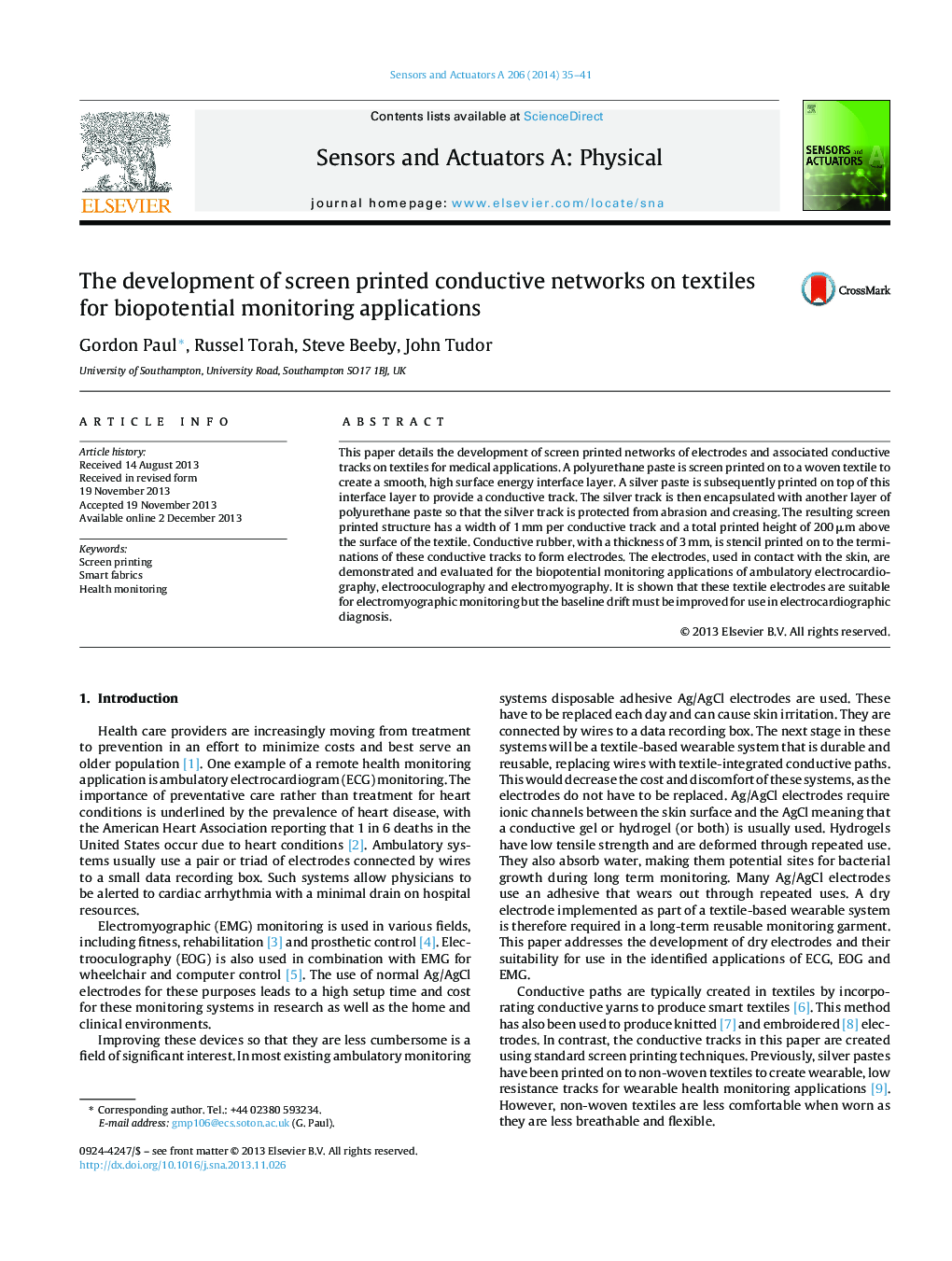| Article ID | Journal | Published Year | Pages | File Type |
|---|---|---|---|---|
| 748837 | Sensors and Actuators A: Physical | 2014 | 7 Pages |
•The development of a fabrication process for textile-based biopotential monitoring networks.•Discussion of the design of the electrode networks and the electrical resistance of connections and electrodes.•Demonstration of electrode networks in 3 applications: ECG, EMG on the forearm and combined EMG and EOG on a headband.•For each demonstrator system an example recording of the relevant signal or signals is included.•A discussion of the appropriateness of these networks for AC and DC signal types.
This paper details the development of screen printed networks of electrodes and associated conductive tracks on textiles for medical applications. A polyurethane paste is screen printed on to a woven textile to create a smooth, high surface energy interface layer. A silver paste is subsequently printed on top of this interface layer to provide a conductive track. The silver track is then encapsulated with another layer of polyurethane paste so that the silver track is protected from abrasion and creasing. The resulting screen printed structure has a width of 1 mm per conductive track and a total printed height of 200 μm above the surface of the textile. Conductive rubber, with a thickness of 3 mm, is stencil printed on to the terminations of these conductive tracks to form electrodes. The electrodes, used in contact with the skin, are demonstrated and evaluated for the biopotential monitoring applications of ambulatory electrocardiography, electrooculography and electromyography. It is shown that these textile electrodes are suitable for electromyographic monitoring but the baseline drift must be improved for use in electrocardiographic diagnosis.
